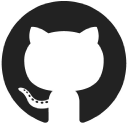Our Zoom & Google Meet Plugin Just Hit 250K Users
Hello! I’m Nick Nikolaiev and I’m the co-founder of Tactiq. io, a B2C2B (business to consumer to business) productivity SaaS startup. Tactiq is a B2B productivity SaaS browser extension driven by product-led growth - we have a freemium pricing model with paid pro and team accounts. Think Loom or Grammarly, with a similar B2B + B2C distribution, but monetization predominantly through B2B customers.
Our main and only product is our Google Chrome/Microsoft Edge browser extension Tactiq.io, which integrates with Google Meet and Zoom. Our application transcribes remote meetings, extracts insights (highlights, keywords), and lets you share them with your team. The product essentially takes notes for you and captures all the crucial meeting outputs whilst you engage in conversation. Product, engineering, sales, and design teams at organizations like Netflix & Salesforce are customers. So are micro-agencies, freelancers, and accessibility organizations - we find that effectively anyone who engages in virtual meetings has a use case for Tactiq.io.
We’ve grown 20 x Year-on-Year over the last year, and grew from 0 - 150,000+ users in our first year.

Download the report and join our email newsletter packed with business ideas and money-making opportunities, backed by real-life case studies.

Download the report and join our email newsletter packed with business ideas and money-making opportunities, backed by real-life case studies.

Download the report and join our email newsletter packed with business ideas and money-making opportunities, backed by real-life case studies.

Download the report and join our email newsletter packed with business ideas and money-making opportunities, backed by real-life case studies.

Download the report and join our email newsletter packed with business ideas and money-making opportunities, backed by real-life case studies.

Download the report and join our email newsletter packed with business ideas and money-making opportunities, backed by real-life case studies.

Download the report and join our email newsletter packed with business ideas and money-making opportunities, backed by real-life case studies.

Download the report and join our email newsletter packed with business ideas and money-making opportunities, backed by real-life case studies.


























